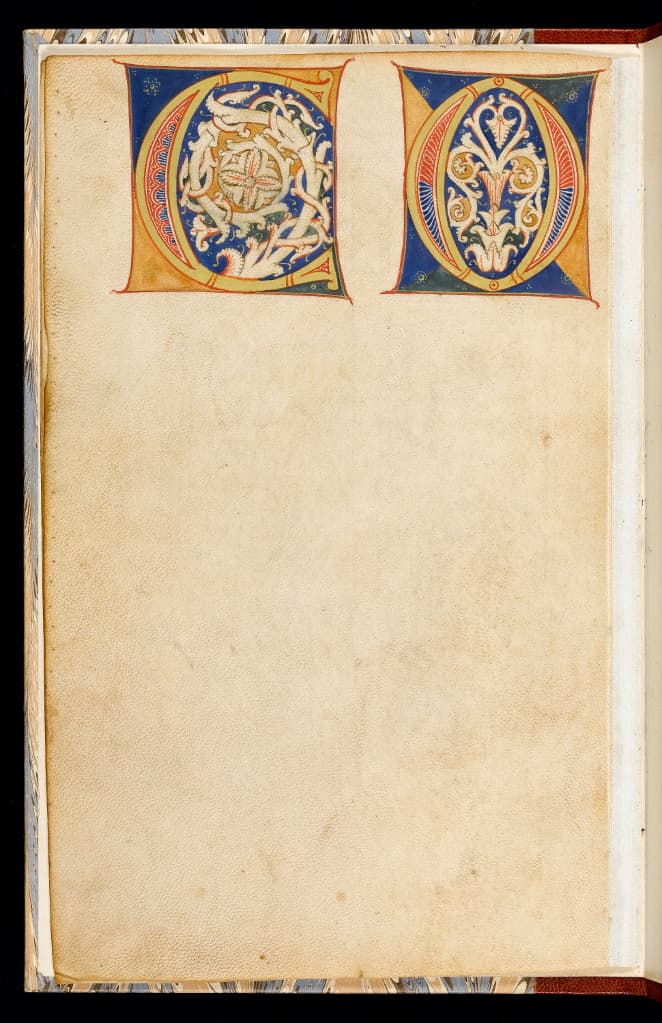Medieval and Renaissance artists learned by imitating their masters’ works. Model books facilitated the circulation of images. They enabled artists to execute common patterns more quickly and record new motifs encountered on distant journeys. Artistic knowledge and practice were preserved and transmitted in treatises on painting and in collections of pigment recipes. Treatises were comprehensive and systematic, with step-by-step instructions. Recipe collections, combining old and new procedures, were often copied together with medical, household and alchemical material. Many recipes were practical, some contained mythical ingredients. Others listed alchemical substances.

Initials C and O; Model book Italy, Tuscany, probably Florence, c.1150-1175
These are the only two fully painted letters in the earliest surviving alphabet model book. Some of the remaining twenty initials drawn in iron-gall ink can be seen on the reverse. The use of a ruler and compasses can be detected in most letters. Pattern sheets like these were indispensable in the transmission of designs, as illuminators copied and adapted them continuously. The motifs and the colours seen here are found in numerous 12th-century Tuscan manuscripts. The red is vermilion, the blue ultramarine, the yellow orpiment, and the green a mixture of orpiment and woad.
Fitzwilliam Museum, MS 83-1972, fol. 3v
Bequeathed by Francis Wormald in 1972




